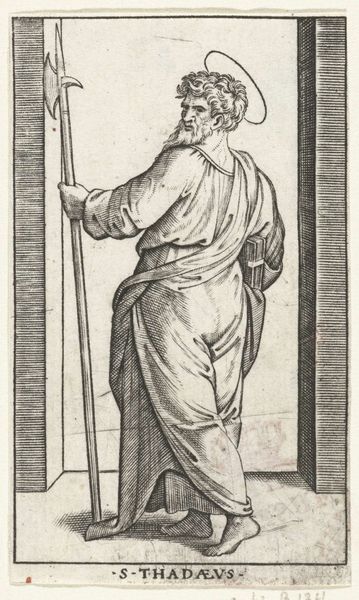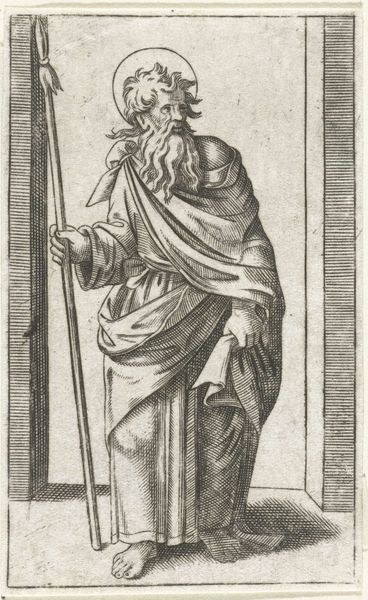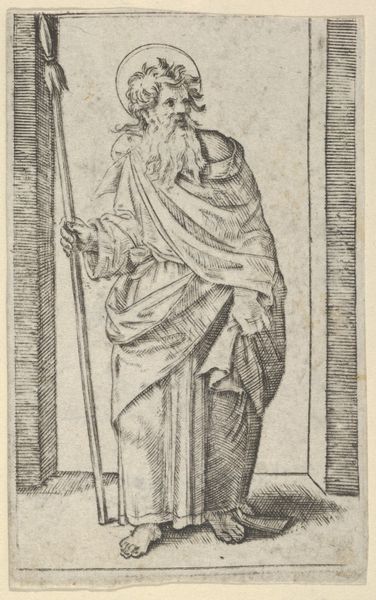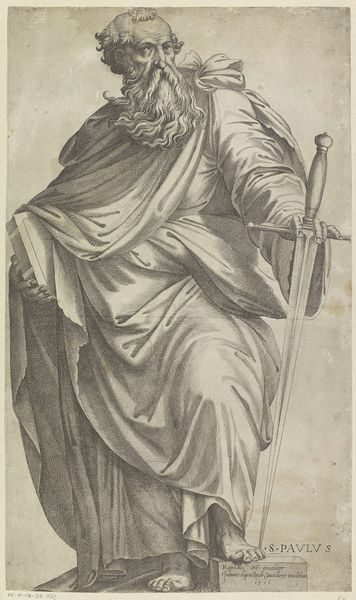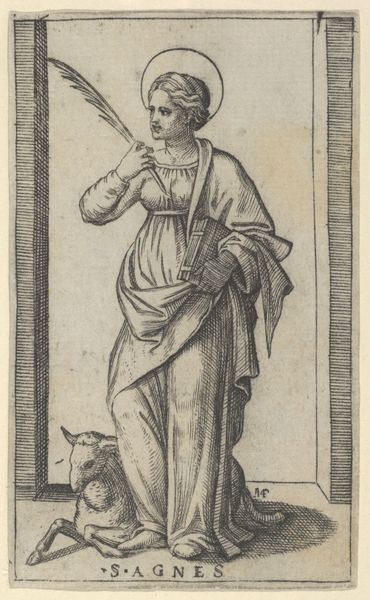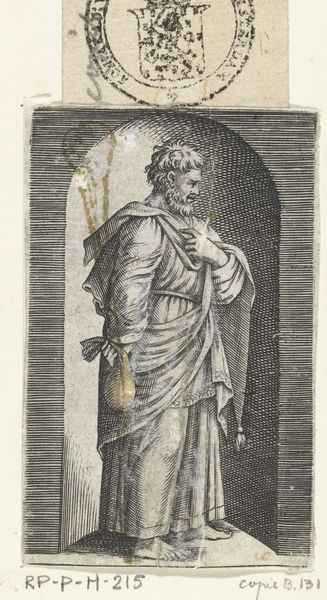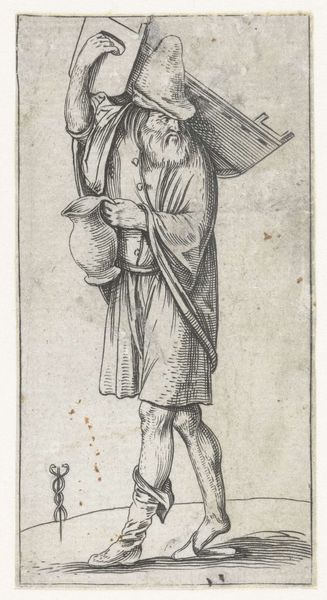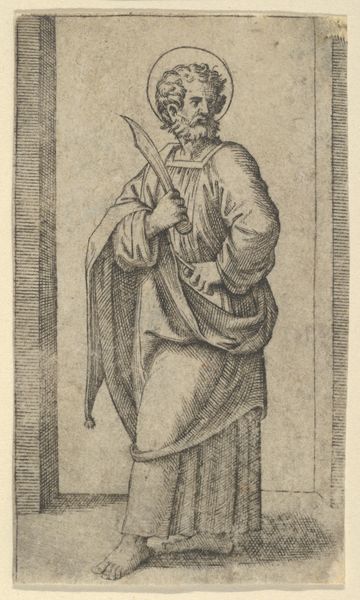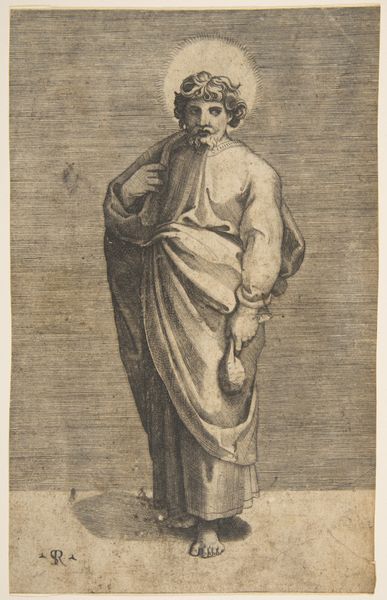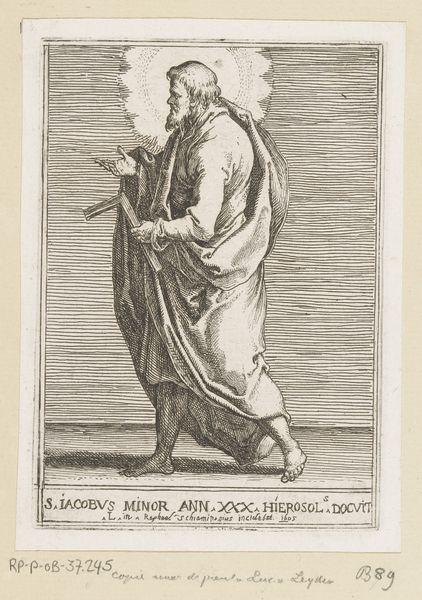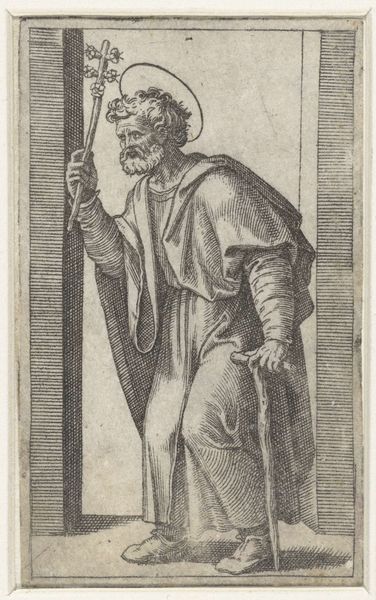
print, engraving
#
portrait
# print
#
figuration
#
italian-renaissance
#
engraving
Dimensions: height 85 mm, width 53 mm
Copyright: Rijks Museum: Open Domain
Editor: Here we have Marcantonio Raimondi's "Apostle Judas Thaddeus with Halberd," an engraving dating from the early 16th century. There's a somber quality to the piece, with a clear emphasis on line and form over elaborate detail. The saint is holding a formidable halberd! What jumps out at you about this print? Curator: The intriguing element here is the labour, both physical and social, embedded in the printmaking process. Raimondi wasn't just replicating; he was translating. How do we consider the act of engraving, a skilled craft, elevated to the level of ‘high art’ through the subject matter of religious iconography, especially during the Italian Renaissance? The copper plate, the ink, the paper – all are commodities. Editor: So, you're interested in how the materials and the act of creating the engraving intersect with its meaning and social role? Curator: Precisely! We should consider the role of patronage and the market for these prints. Were they devotional objects for the masses, or collectables for a wealthy elite? Consider the economic realities of artistic production. Did Raimondi conceive of this as art, craft, or commerce? Also, it prompts one to inquire on its method. Is this engraving or etching? It is difficult to be sure, but differences in technique will provide context. Editor: That's a really interesting angle I hadn't considered. The practical matter of materials used is definitely linked with artistic expression in ways I haven't fully grasped. I guess, too, it's a challenge to think beyond subject and into that world of production and reception! Curator: Indeed. We've looked past traditional attribution to contemplate the material conditions that birthed it. To consider these questions surrounding its manufacture forces us to consider hierarchies and social relations.
Comments
No comments
Be the first to comment and join the conversation on the ultimate creative platform.

